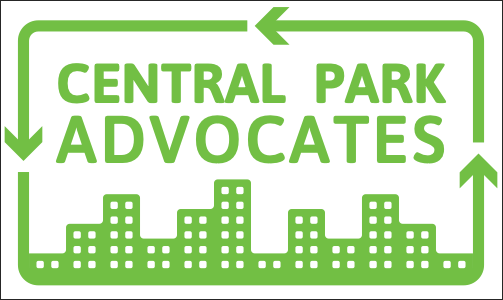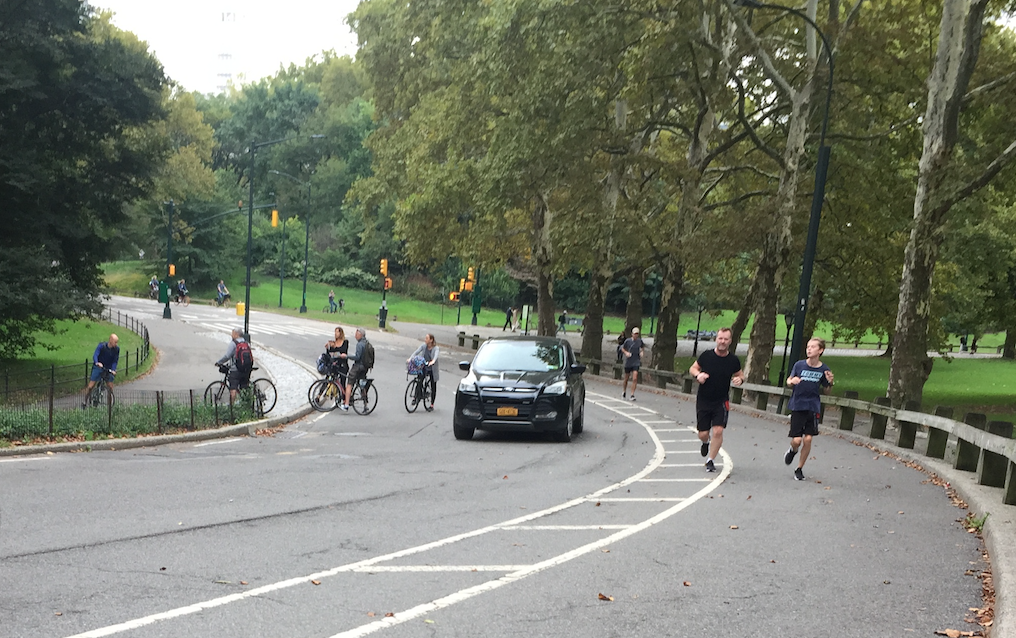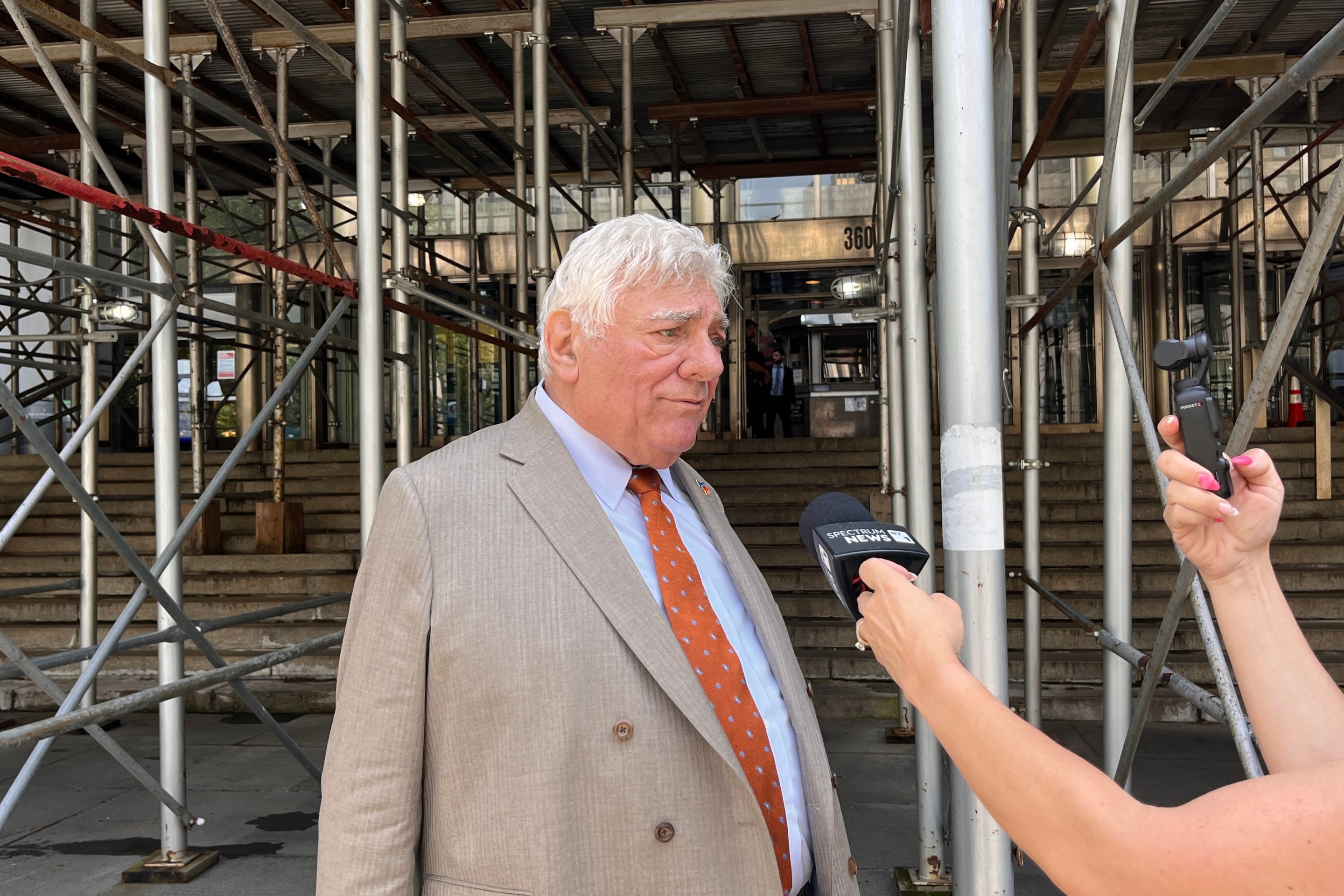Activists won the battle to rid Central Park of private automobiles two years ago, but they have lost the war: the park remains designed for cars, just the way Robert Moses wanted it — and the result has been misguided calls for more NYPD enforcement against park users rather than simply redesigning the park's roadways to make them work for everyone.
To that end, Central Park Advocates, a new group comprised of walkers, bikers, scooter-riders, dog walkers, bird watchers, and other park users, is demanding design solutions that could reduce the conflicts between people using the park on foot and those on people-powered wheels. [Full report here.]

“If the park doesn’t work for everyone (all recreational users), the park doesn’t work for anyone," said group member Hindy Schachter, whose husband Irving was knocked down and killed by a cyclist, yet has called for a design not an enforcement solution.
The new group came together after the Upper West Side's Community Board 7 called for increased NYPD enforcement against cyclists and then dog-walkers.
Central Park is a place of refuge for city dwellers. But, it’s also a tourist attraction and is used by many people as a transportation link. Given the enormous size of Central Park, if someone on the East Side needs to access schools, stores, or work on the West Side, or vice versa, they have a large park to cross. In December, Dr. Daniel Cammerman was biking from the West Side to the East Side to Mt. Sinai Hospital. He used the 96th Street transverse, a notoriously dangerous motorway. Most likely, this was the fastest, simplest way to get across town for him. That morning, it proved deadly.
Had the Parks Department and the Central Park Conservancy listened to advocates before this tragedy, they would have fixed the meandering, poorly marked, pothole-strewn and unconnected shared path at 97th Street, and Cammerman might have chosen to use it. In fact, in 2010, advocates created a plan with Parks and CPC to implement six shared crosstown bike/ped paths. To date, only the 72nd Street path and the sub-par 97th Street path have been implemented.
You’d have to be Ace Ventura Pet Detective to find this crosspark shared path. Let’s not make this path the best kept secret. @NYC_DOT @NYCParks @CentralParkNYC @CB7Manhattan #bikenyc @StreetsblogNYC pic.twitter.com/rdM4AjFovw
— Streetopia Upper West Side (@StreetopiaUWS) January 15, 2020
In this period when cycling is expanding, bicyclists need safe, direct ways to cross the park, something drivers have had for more than a century. It is the responsibility of the Parks Department and the Conservancy to designate more shared paths or to create dedicated bike paths across the park. These two entities need to be part of the solution, as more and more people use people-powered wheeled devices to travel around town.
Pedestrians also need ways to cross the loop road safely. The park has 47 traffic lights — one every 674 feet — which is exactly the number of lights that were there when cars ruled the park loop. One might think that with all these signalized intersections, crossing the loop would be simple, but it’s not, and the presence of these lights in a recreational space creates more conflicts than it prevents.

At the same time, fully one-third of the loop road’s width is reserved for motor vehicles. Perhaps it’s time for the Parks Department to study the loop road and to present data and information to park users, community boards, and the city at large.
As with many of the city’s most popular and successful public space projects, we need to study the current conditions, identify and implement ideas, study those ideas for their efficacy, and iterate. Clinging to a former status quo does nothing for the millions of park users. And, enforcing behaviors that are based on auto-centrism does not solve any of our problems. Wouldn’t it be better to create a culture of safety and respect that is based on a “yield to pedestrians” ethos?
Central Park Advocates has outlined multiple ideas that city officials and the Conservancy can use as a starting point. The time for action is upon us. This isn’t rocket science.
“It took 52 years for activists to get the cars out of the park,” said group member Ken Coughlin, who led Transportation Alternatives’ campaign for a car-free Central Park from 1996 to 2018. “I hope it won’t take quite as long for the park to shed its last vestiges of auto dominance and finally fulfill its role as an oasis that supports all responsible users.”
Streetfilms has put together a series of short movies on all the ways Central Park fails. Click here to watch them.






